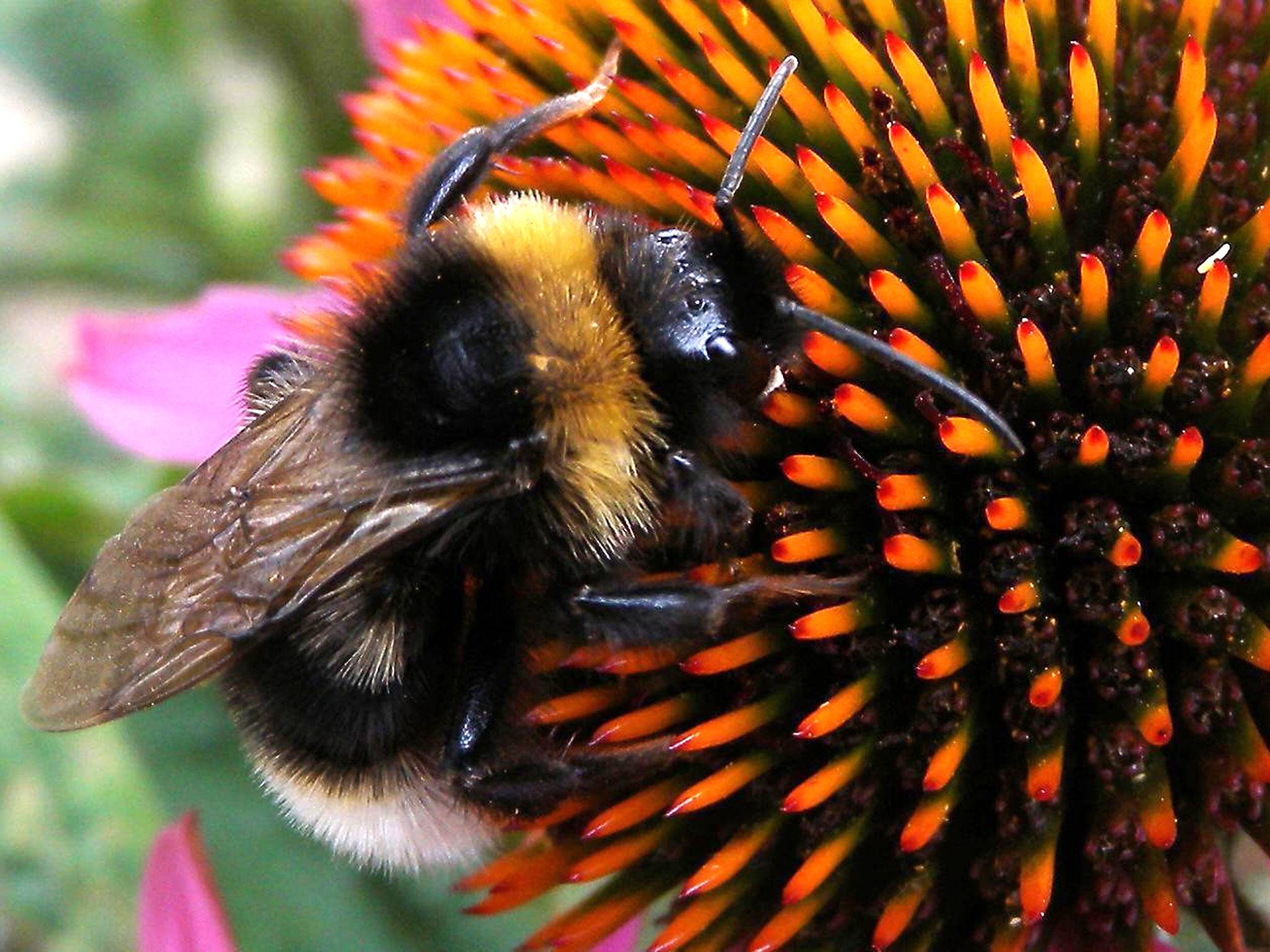The flight of the Bumblebee becomes more impressive: Scientists now believe this humble insect could fly over Mount Everest
Bumblebees are able to fly at altitudes that would suffocate other creatures

Your support helps us to tell the story
From reproductive rights to climate change to Big Tech, The Independent is on the ground when the story is developing. Whether it's investigating the financials of Elon Musk's pro-Trump PAC or producing our latest documentary, 'The A Word', which shines a light on the American women fighting for reproductive rights, we know how important it is to parse out the facts from the messaging.
At such a critical moment in US history, we need reporters on the ground. Your donation allows us to keep sending journalists to speak to both sides of the story.
The Independent is trusted by Americans across the entire political spectrum. And unlike many other quality news outlets, we choose not to lock Americans out of our reporting and analysis with paywalls. We believe quality journalism should be available to everyone, paid for by those who can afford it.
Your support makes all the difference.The flight of the bumblebee – once thought to be aerodynamically impossible – has proven to be even more scientifically astounding than previously believed following a study showing how the humble insect is able to fly high enough to pass over Mount Everest.
Researchers have discovered that a species of Chinese bumblebee is still capable of flight when the air pressure falls to a level equivalent to an altitude of 9,000 metres – more than enough to fly over the 8,848-metre-high peak of the greatest mountain in the world.
Video recordings of bumblebees flying in a barometric chamber where the air pressure is allowed to fall to levels that would suffocate most other animals show that the bees continue to fly by altering the angle of their wings to increase their amplitude as they flap back and forth.
Scientists found that even when the concentrations of oxygen reached perilously low levels as the density of the air fell inside the chamber, the bumblebees still managed active flight in conditions equivalent to the thin air on top of the highest mountain range.
The bumblebees effectively increased the force produced by their flapping wings to compensate for the thinness of the air, rather than increasing the wing-beat rate, said Michael Dillon of the University of Wyoming, who led the study published in the journal Biology Letters.
“So the roughly 60 per cent decline in air density has to be matched by a 60 per cent increase in force production – a remarkable feat when you also consider that they are doing this in such low oxygen,” Professor Dillon said.
“A hovering bumblebee has an oxygen demand that is roughly 15 to 20 times that of an elite athlete, yet in our experiments they are meeting this demand in spite of a greatly reduced supply – the partial pressure of oxygen is less than a third of sea-level values,” he said.

The experimenters captured wild bumblebees belonging to the species Bombus impetuosus which forages for nectar and pollen in the mountains near Rilong in Sichuan province of China. Within 10 minutes of being captured they were placed in a barometric chamber and their flight filmed as the air pressure was slowly lowered.
The images revealed that the bees increased the angular velocity of their wings by increasing the amplitude of each wing stroke while maintaining a constant wing-beat frequency. The flight angle of the bee increased as a result of the shift, the researchers found.
“This extreme flight performance is likely to be biologically relevant in other contexts. For example, bumblebees fill up on nectar and pollen so that they can deliver these resources back to the hive and feed developing young,” Professor Dillon said.
“Flying with a large load is much more challenging than flying empty. Similarly, performing rapid forward flight and evasive manoeuvres to avoid predators both likely require enhanced flight performance,” he explained.
Not many flying animals could operate under such thin-air conditions and although insects have been found floating at very high altitudes, this is because they have been blown there by the wind.
“There are a few other documented examples of organisms flying over Everest, such as bar-headed geese, and there are many records of insect sightings as high as 5,000 to 6,000 metres in the Himalayas,” Professor Dillon said.
“However, to our knowledge, this is the highest record of an insect flying in reduced barometric pressures, that is, when challenged with both reductions in air density and oxygen. So, I think it is safe to say that it is very unusual, and even more so for insects,” he said.
Join our commenting forum
Join thought-provoking conversations, follow other Independent readers and see their replies
Comments